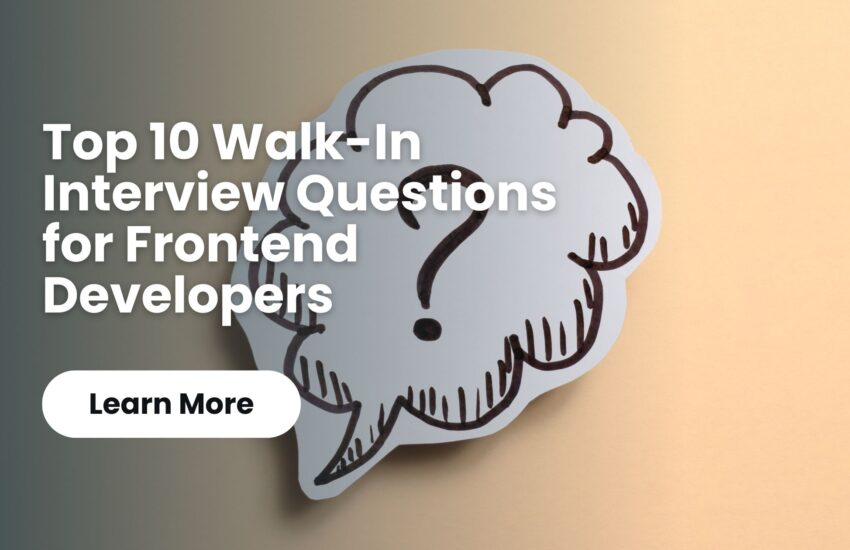Frontend development is a crucial aspect of web and application design, requiring a blend of technical expertise and creativity. Walk-in interviews for frontend developers often test knowledge of HTML, CSS, JavaScript, frameworks, and performance optimization. To help you prepare, here are the top 10 commonly asked questions and how to answer them effectively.
1. What Are the Key Differences Between HTML, CSS, and JavaScript?
Answer:
- HTML (HyperText Markup Language): Structures the content of web pages.
- CSS (Cascading Style Sheets): Styles and enhances the appearance of the web page.
- JavaScript: Adds interactivity and dynamic behavior to web applications.
2. Explain the Box Model in CSS.
Answer:
The CSS Box Model consists of four parts:
- Content: The actual text or images inside the box.
- Padding: Space around the content inside the border.
- Border: The outer edge enclosing the padding and content.
- Margin: Space outside the border separating elements.
3. What Is the Difference Between Flexbox and CSS Grid?
Answer:
- Flexbox: One-dimensional layout system for arranging items in a row or column.
- CSS Grid: Two-dimensional layout system allowing precise positioning of elements.
4. How Does JavaScript Handle Asynchronous Operations?
Answer:
JavaScript handles asynchronous operations using:
- Callbacks (Older approach)
- Promises (ES6 feature to avoid callback hell)
- Async/Await (Modern way to handle asynchronous code more efficiently)
5. What Is the Difference Between == and === in JavaScript?
Answer:
- == (Abstract Equality): Compares values after type conversion.
- === (Strict Equality): Compares both value and data type without conversion.
6. Explain the Concept of Virtual DOM in React.
Answer:
The Virtual DOM is a lightweight JavaScript representation of the actual DOM. React updates the Virtual DOM first and then efficiently updates only the changed elements in the real DOM, improving performance.
7. How Can You Optimize a Website for Better Performance?
Answer:
- Minify and compress CSS, JavaScript, and images.
- Use lazy loading for images and scripts.
- Implement caching strategies.
- Optimize database queries and API responses.
8. What Are the Benefits of Using a CSS Preprocessor Like SASS or LESS?
Answer:
- Variables for reusable values (e.g., colors, fonts)
- Nesting for better readability
- Mixins for reusable styles
- Functions and inheritance for maintainable code
9. What Is CORS and Why Is It Important?
Answer:
CORS (Cross-Origin Resource Sharing) is a security feature that prevents unauthorized access to resources from different origins. It allows or restricts specific domains from making requests to a server.
10. What Are the Different Types of React Hooks?
Answer:
- useState: Manages component state.
- useEffect: Handles side effects (e.g., data fetching, event listeners).
- useContext: Accesses global state.
- useRef: Maintains references to DOM elements.
- useReducer: Manages complex state logic.
Final Thoughts
Mastering these frontend interview questions can significantly increase your chances of success in a walk-in interview. Keep practicing, stay updated with the latest frontend trends, and leverage platforms like TechHiringHub to find top frontend developer opportunities.

